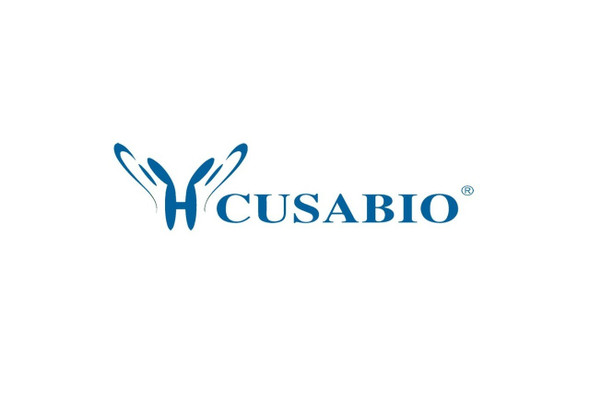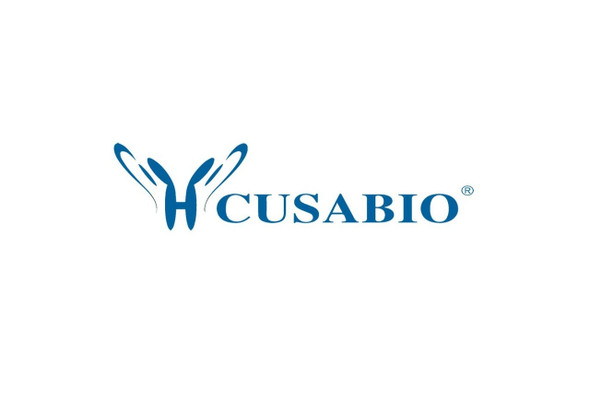Cusabio Rattus norvegicus Recombinants
Recombinant Rat Vascular endothelial growth factor A (Vegfa) | CSB-EP025833RA
- SKU:
- CSB-EP025833RA
- Availability:
- 13 - 23 Working Days
Description
Recombinant Rat Vascular endothelial growth factor A (Vegfa) | CSB-EP025833RA | Cusabio
Alternative Name(s): Vascular permeability factor ;VPF
Gene Names: Vegfa
Research Areas: Others
Organism: Rattus norvegicus (Rat)
AA Sequence: APTTEGEQKAHEVVKFMDVYQRSYCRPIETLVDIFQEYPDEIEYIFKPSCVPLMRCAGCCNDEALECVPTSESNVTMQIMRIKPHQSQHIGEMSFLQHSRCECRPKKDRTKPEKKSVRGKGKGQKRKRKKSRFKSWSVHCEPCSERRKHLFVQDPQTCKCSCKNTDSRCKARQLELNERTCRCDKPRR
Source: E.coli
Tag Info: N-terminal 6xHis-tagged
Expression Region: 27-214aa
Sequence Info: Full Length of Mature Protein
MW: 26.1 kDa
Purity: Greater than 90% as determined by SDS-PAGE.
Relevance: Growth factor active in angiogenesis, vasculogenesis and endothelial cell growth. Induces endothelial cell proliferation, promotes cell migration, inhibits apoptosis and induces permeabilization of blood vessels. Binds to the FLT1/VEGFR1 and KDR/VEGFR2 receptors, heparan sulfate and heparin. May play a role in increasing vascular permeability during lactation, when increased transport of molecules from the blood is required for efficient milk protein synthesis.
Reference: Amino acid and cDNA sequences of a vascular endothelial cell mitogen that is homologous to platelet-derived growth factor.Conn G., Bayne M.L., Soderman D.D., Kwok P.W., Sullivan K.A., Palisi T.M., Hope D.A., Thomas K.A.Proc. Natl. Acad. Sci. U.S.A. 87:2628-2633(1990)
Storage: The shelf life is related to many factors, storage state, buffer ingredients, storage temperature and the stability of the protein itself. Generally, the shelf life of liquid form is 6 months at -20?/-80?. The shelf life of lyophilized form is 12 months at -20?/-80?.
Notes: Repeated freezing and thawing is not recommended. Store working aliquots at 4? for up to one week.
Function: Growth factor active in angiogenesis, vasculogenesis and endothelial cell growth. Induces endothelial cell proliferation, promotes cell migration, inhibits apoptosis and induces permeabilization of blood vessels. Binds to the FLT1/VEGFR1 and KDR/VEGFR2 receptors, heparan sulfate and heparin. May play a role in increasing vascular permeability during lactation, when increased transport of molecules from the blood is required for efficient milk protein synthesis. Binding to NRP1 receptor initiates a signaling pathway needed for motor neuron axon guidance and cell body migration, including for the caudal migration of facial motor neurons from rhombomere 4 to rhombomere 6 during embryonic development (By similarity).
Involvement in disease:
Subcellular Location: Secreted
Protein Families: PDGF/VEGF growth factor family
Tissue Specificity: Expressed in the pituitary, in brain, in particularly in supraoptic and paraventricular nuclei and the choroid plexus. Also found abundantly in the corpus luteum of the ovary and in kidney glomeruli. Expressed in the ductal epithelial cells of post-pubertal mammary glands. Expressed in the ductal and alveolar epithelial cells throughout the whole period of gestational evolution, lactation and involution.
Paythway:
Form: Liquid or Lyophilized powder
Buffer: If the delivery form is liquid, the default storage buffer is Tris/PBS-based buffer, 5%-50% glycerol. If the delivery form is lyophilized powder, the buffer before lyophilization is Tris/PBS-based buffer, 6% Trehalose, pH 8.0.
Reconstitution: We recommend that this vial be briefly centrifuged prior to opening to bring the contents to the bottom. Please reconstitute protein in deionized sterile water to a concentration of 0.1-1.0 mg/mL.We recommend to add 5-50% of glycerol (final concentration) and aliquot for long-term storage at -20?/-80?. Our default final concentration of glycerol is 50%. Customers could use it as reference.
Uniprot ID: P16612
HGNC Database Link: N/A
UniGene Database Link: UniGene
KEGG Database Link: KEGG
STRING Database Link: STRING
OMIM Database Link: N/A










